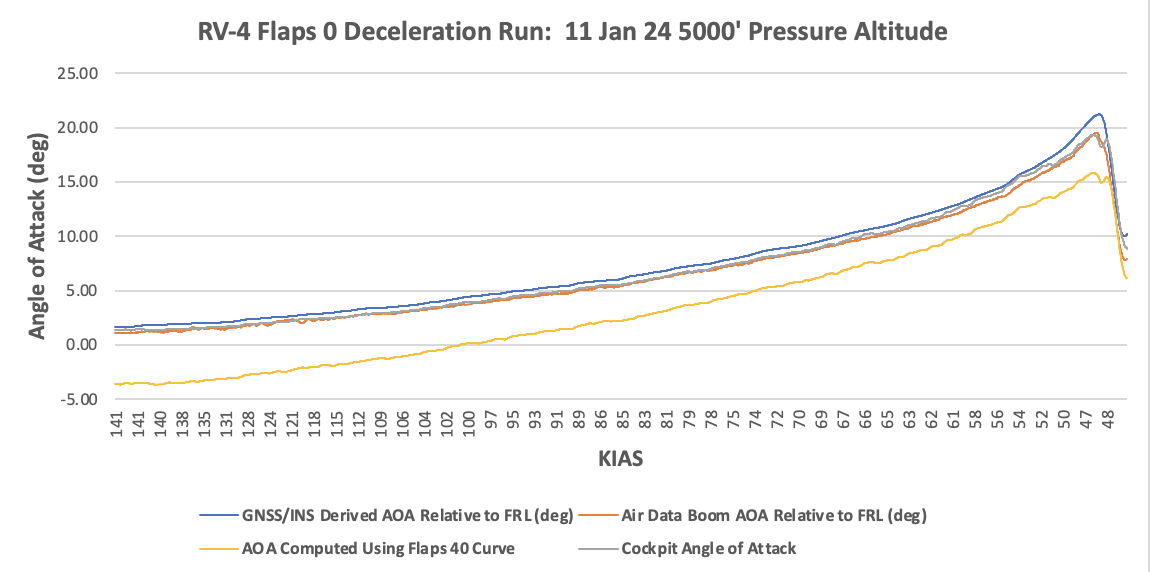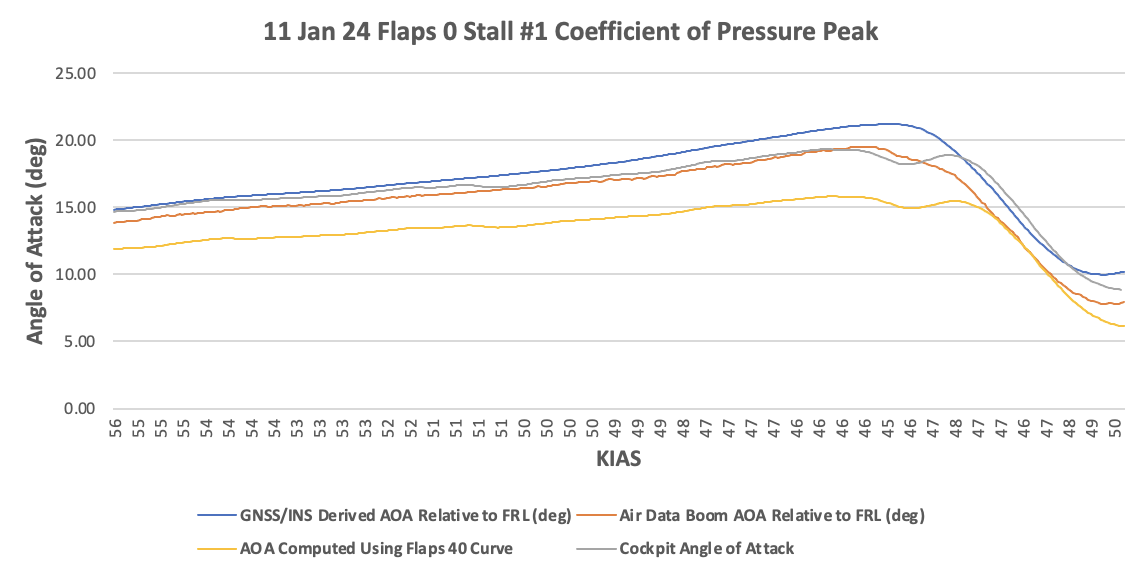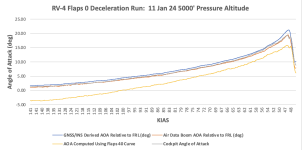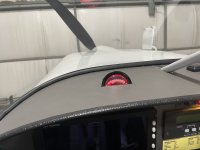Pressure derived vs IMU (Inertial) derived Angle of Attack, points to ponder...
We spend a lot of time testing AOA

. On our instrumented test airplanes, we have pressure-derived AOA, IMU-derived AOA and a separate air data boom that measures alpha (AOA), beta (yaw) angles, dynamic and static pressure. It's always interesting to look at the three systems relative to each other. My RV-4 has two separate pressure AOA systems, and two separate IMU-derived AOA systems in addition to the boom. What have we learned?
First, what's "IMU-derived" AOA? It's just the difference between where the airplane is going (flight path) and where it's pointing (pitch angle). Here's a Boeing diagram that shows how body angle is measured. Body angle is the difference between the relative wind and the longitudinal axis of the airplane. It effectively eliminates wing geometry effects (section blending, twist, etc.) and is all the "angle of attack" information the pilot needs to fly the wing.
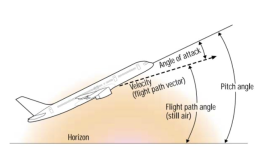
Note the "(still air)" comment associated with flight path angle. Under
stable conditions, unaccelerated level flight, pitch angle equals AOA. For years, this has been a standard flight test technique for calibrating and measuring AOA. Things become more challenging during maneuvering or unstable (turbulence/gust) conditions. The matrix calculus required to accurately derive all-attitude velocity (flight path) vector plus the filtering required to process a noisy MEMS gyro signal push the limits of a small processor. Not to mention the complexity of the AHRS coding required to get that right. In other words, under stable conditions (rolled out on final, trimmed, on glide path, on speed) the IMU-derived AOA is very accurate, but during maneuvering, say turning base to final, it may not be. Pressure-derived AOA doesn't suffer that limitation, it also is relatively easy to code and computes quickly.
Let's start with the base/final case. In this video, I'm just flying a normal (wide!) overhead to a touch and go. I'm not being particularly pure about maintaining an on speed condition, and fly most of the turn in what we call a "slightly fast" condition relative to on speed. On speed is used for approach/landing and equal to 1.73 L/Dmax AOA, which correlates with 1.25-1.35 Vs. It occurs with the ratio of actual coefficient of lift to maximum coefficient of lift is 60%, or what is sometimes referred to as a 60% lift condition. It's not a single AOA, but rather a small band (about +/- 1 degree) in a light plane that provides a cue equal to +/- 2 to 2 1/2 knots of desired AOA at 1 G. In other words a band about 5 knots wide. All AOA systems use a similar technique, but the range of body angle will change depending on the airplane. For example, an F-18 band angle band is narrower, but provides a similar IAS range. This is sufficient to catch a 3 wire aboard a pitching deck at night. It's also sufficient for driving auto-throttle input in the big jet I fly at work. More than sufficient for getting my RV-4 to the TDZ with just the right energy for landing.
Now let's look at how the three sources of AOA information compare in the video. Here's a plot that shows AOA and IAS:
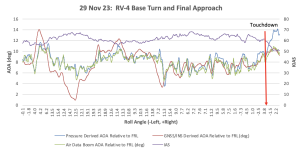
Notice that the pressure Derived AOA and the AOA of the air data boom marry up nicely throughout, but the IMU algorithm is challenged even at the relatively shallow bank angles flown. The good news is that the phase aligns nicely and the IMU-derived AOA is "timely."
Now let's look at where folks get into trouble with the aerodynamic limit of the airplane. Most GA loss of control mishaps occur at "low" G, i.e., less than 2. Here's a video of a flaps 40 accelerated stall flown during a simulated base turn:
And here is a plot of the measured AOA during the maneuver:
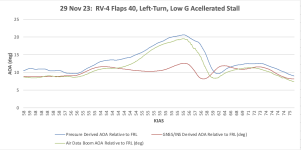
In this case, the IMU-derived AOA detects stall, but notice the difference in relative accuracy compared to the other AOA solutions. We know this because the peaks are aligned.
Now let's look at a more extreme case, a skidding departure from controlled flight. This occurs if the pilot tries to "rudder" the airplane around the turn, but applies opposite aileron to keep the bank angle from getting too steep. A classic "uncoordinated" situation.
If we plot the data from this maneuver and once again compare our AOA solutions, we see some interesting behavior from the gyro-derived AOA:
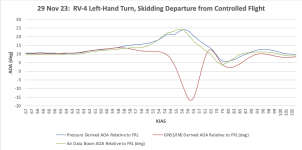
In this case, I'm not sure what the IMU-derived AOA indication would provide, so that would be an interesting test point for some one with an IMU-derived AOA display/tone. We don't drive any of our displays with IMU-derived AOA, so have no way to assess performance real-time or using video de-brief. Our system uses the indigenous gyro for calibration only, and we derive AOA from the GNSS/INS reference system post-flight only. BTW, if you are an AHRS guru that can code matrix calculus and handle Kalman filtering, we'd love to buy you a beer and pick your brain

.
Perhaps the GRT folks will chime in with some insights on their system.
Fly safe,
Vac
P.S., the ability to integrate pictures and video in the new forum software is awesome!




